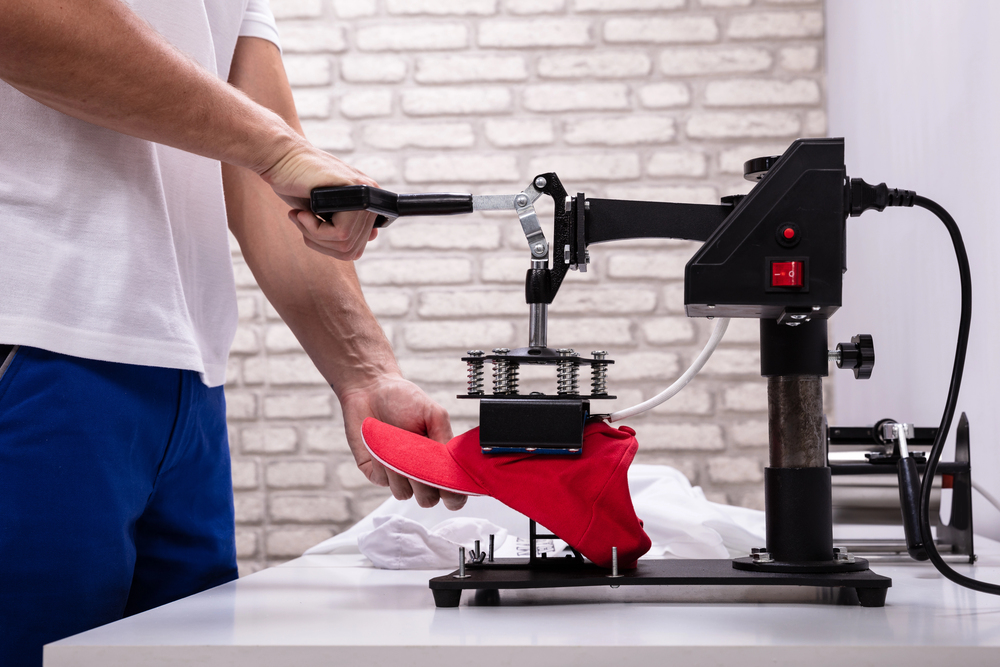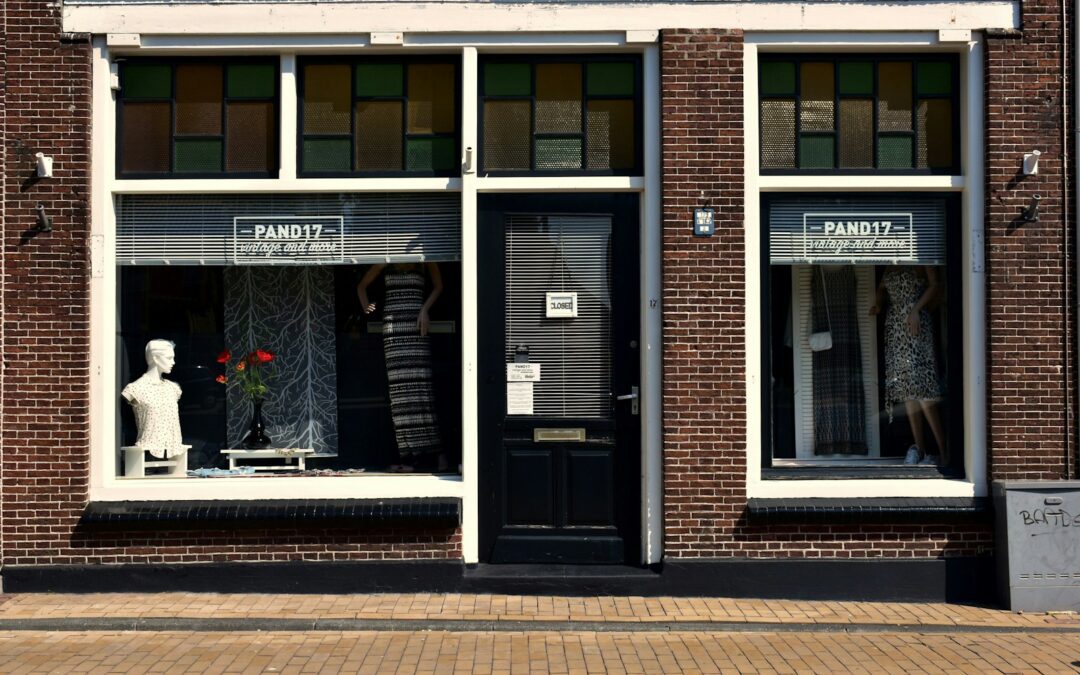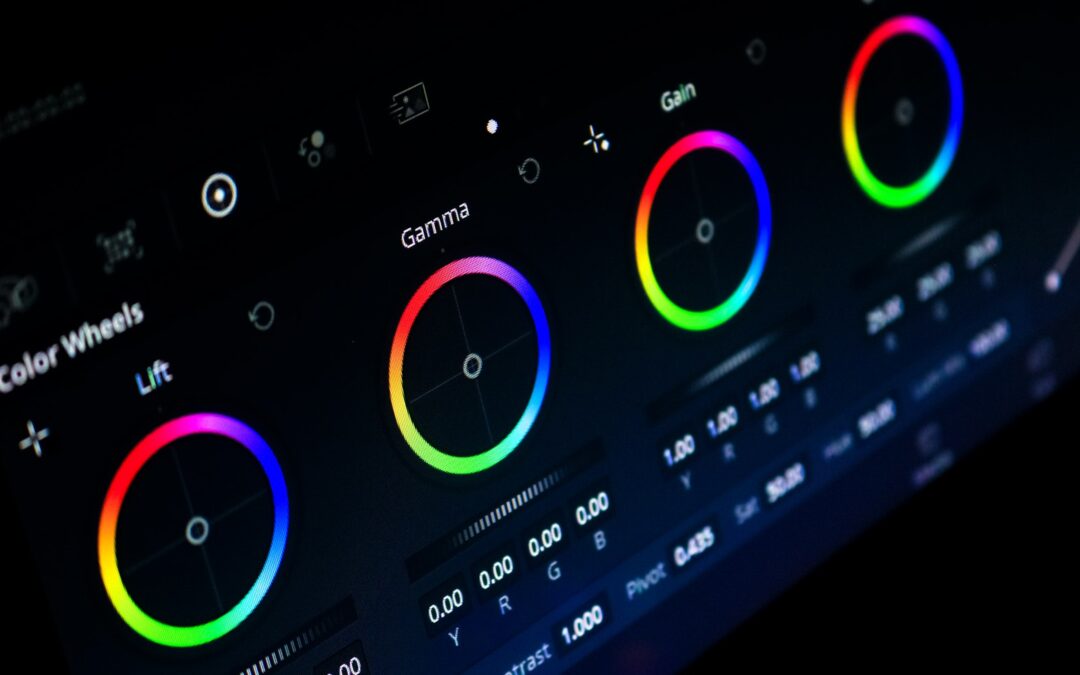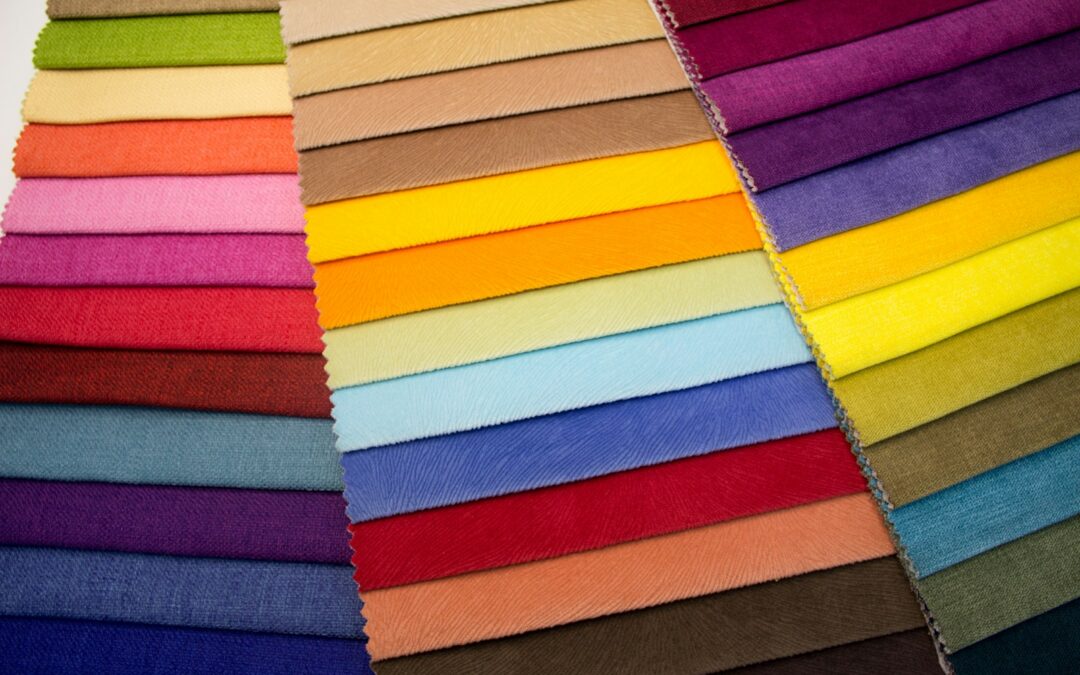Sublimation vs DTF Printing: Read on to learn more.
When it comes to creating custom apparel, choosing the right printing method can make or break your business. Two advanced but vastly different techniques are leading the printing industry today: Sublimation Printing and DTF (Direct-to-Film) Printing. Each method comes with its unique advantages, challenges, and suitability based on specific needs.
This blog explores the key differences and benefits between sublimation and DTF Printing. Whether you’re running a custom apparel shop, a print-on-demand store, or looking to grow your printing business, this detailed comparison will guide you toward the best choice for your needs.

Understanding the Basics of DTF and Sublimation Printing Techniques
What is DTF Printing?
Direct-to-Film (DTF) printing is a digital printing technology designed to transfer designs onto fabric. DTF printing involves fewer steps in the production process, making it a quicker option for businesses with tight deadlines and personalized orders. Here’s how it works:
- With a DTF printer, the design is printed onto a PET (Polyethylene Terephthalate) sheet.
- A curing powder is applied to the print, which is later heated to form an adhesive layer.
- Using a heat press machine, the design is transferred from the film to the fabric.
What makes DTF unique?
- It works on almost any fabric type, including cotton, nylon, polyester, and blends.
- DTF is known for vibrant color reproduction, durability, and versatility across light and dark materials.
- Services like Limitless Transfers make it even easier by offering high-quality, hot-peel DTF transfers with no order minimums.
What is Sublimation Printing?
Sublimation Printing uses heat to transfer dye directly into polyester fabric or polymer-coated items. The sublimation printing process transforms ink into gas through heat, which then bonds with synthetic fibers, creating permanent and high-quality prints. Here’s how sublimation works:
- A sublimation printer uses specialized inks to print a high-resolution design on dedicated sublimation paper.
- The design is transferred by pressing the sublimation paper onto the substrate with a heat press machine.
What makes sublimation unique?
- The dye embeds itself into the material, which results in a soft, breathable finish.
- Sublimation works best with light-colored polyester fabrics and polymer-coated items like mugs, plaques, and keychains.
- This method is ideal for creating photorealistic designs or vibrant all-over prints on suitable materials.
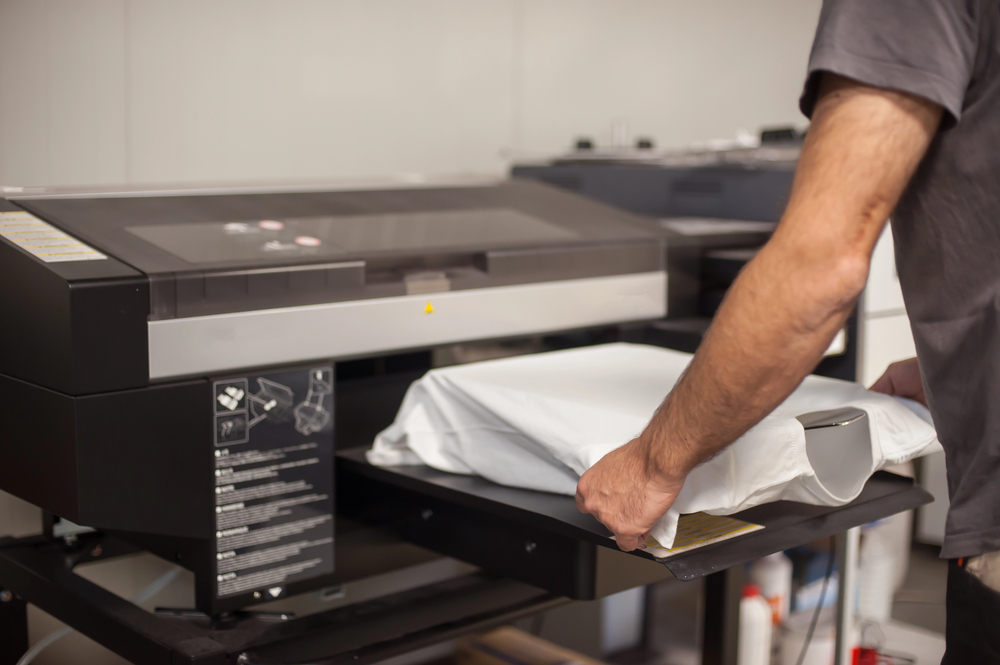
Key Differences Between Sublimation and DTF Printing
1. Material Compatibility
- DTF Printing: Works on nearly all fabric types including cotton, polyester, blends, denim, and even non-traditional materials like leather or wood. This versatility makes it a go-to option for many businesses.
- Sublimation Printing: Requires polyester or a high polyester blend (at least 65%) for optimal results. It works well for light-colored fabrics and cannot be used on cotton or dark-colored materials.
2. Print Quality and Durability
- DTF Printing: Prints sit on top of the fabric, creating a slightly raised texture. While durable, repeated washes may lead to minor cracking over time, unlike sublimation prints which retain vibrant colors and have a longer lifespan due to the dye being embedded in the fabric fibers.
- Sublimation Printing: The ink permanently embeds into the fabric fibers, resulting in a soft feel and longer-lasting designs that won’t crack, peel, or fade.
3. Versatility and Applications
- DTF: Perfect for businesses offering diverse products. Whether you’re printing on t-shirts, jackets, or non-fabric items like canvas bags, DTF is highly adaptable.
- Sublimation: Best suited for specific applications like polyester apparel, banners, or custom gift items (e.g., mugs, pillows).
4. Color Accuracy and Detail
- Both printing methods produce stunning visuals, but DTF printing excels in handling intricate, high-detail designs on both light and dark materials.
- Sublimation shines with vivid color tones on light-colored fabrics but lacks the ability to print on dark substrates.
5. Cost and Setup
- DTF Printing: Requires specialized equipment such as a DTF printer, curing oven, adhesive powder, and PET film. Initial costs are higher, with entry-level DTF printers starting at $2,000.
- Sublimation Printing: More cost-efficient for startups. You can convert select inkjet printers into sublimation printers with sublimation ink and paper. However, these printers are limited to polyester materials.
6. Design Complexity and Color Options
When it comes to design complexity and color options, both DTF and sublimation printing have their strengths. DTF printing can handle intricate designs with fine details, even on textured or dark materials. It also offers a wide range of color combinations, including bold and vibrant hues. Sublimation printing, on the other hand, is ideal for photorealistic images and designs with tiny details, but it’s limited to light-colored polyester fabrics.
In terms of color options, DTF printing uses solvent-based inks available in CMYK colors, while sublimation inks come in CMYK but lack white base ink. However, sublimation printing can produce stunning results with vibrant and complex designs, especially on light-colored fabrics and hard surfaces.
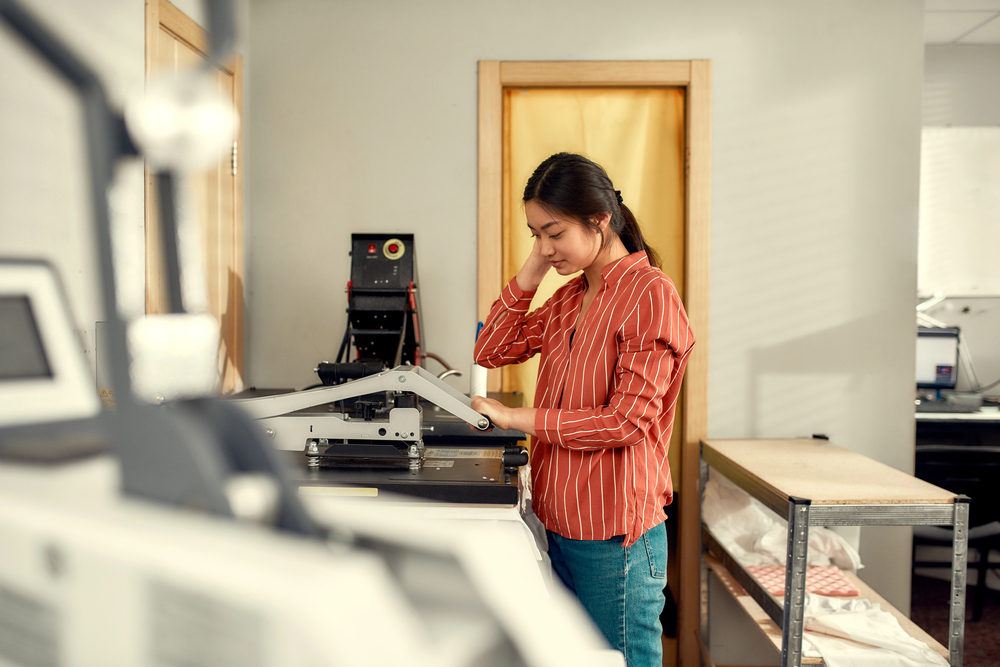
Sublimation vs DTF Printing in Action
How Easy Are These Methods to Use?
- DTF Printing: Requires additional steps like applying adhesive powder and curing sheets, making it a slightly longer process. However, the variety it offers in terms of substrate options makes it worth the effort.
- Sublimation Printing: Faster and simpler for producing large production runs with fewer steps involved, though it is limited by material compatibility.
What About Environmental Impact?
- DTF Printing: Generates waste from adhesive powder and printed films, relying on non-biodegradable materials.
- Sublimation Printing: Uses less energy but requires polyester to achieve vibrant results, contributing to synthetic fiber production.
Print Size Options
Both DTF and sublimation printing have limitations when it comes to print size. DTF printers usually handle designs that cover the front or back of a shirt, while sublimation printers are often used for all-over or seam-to-seam prints. However, the size of the printer and transfer film can limit the print size.
For larger prints, sublimation printing might be a better option, as it can produce seamless prints on bigger surfaces. However, DTF printing can still produce high-quality prints on smaller surfaces, making it a great option for customizing smaller items like phone cases or tote bags.
Production Time and Order Quantity
The production time and order quantity can vary significantly between DTF and sublimation printing. Sublimation printing is generally faster than DTF printing, especially for larger orders. However, DTF printing can still produce high-quality prints quickly, especially for smaller orders.
When it comes to order quantity, sublimation printing is a more cost-effective choice for larger orders. However, DTF printing is perfect for one-off custom designs or small batch orders with minimal setup.
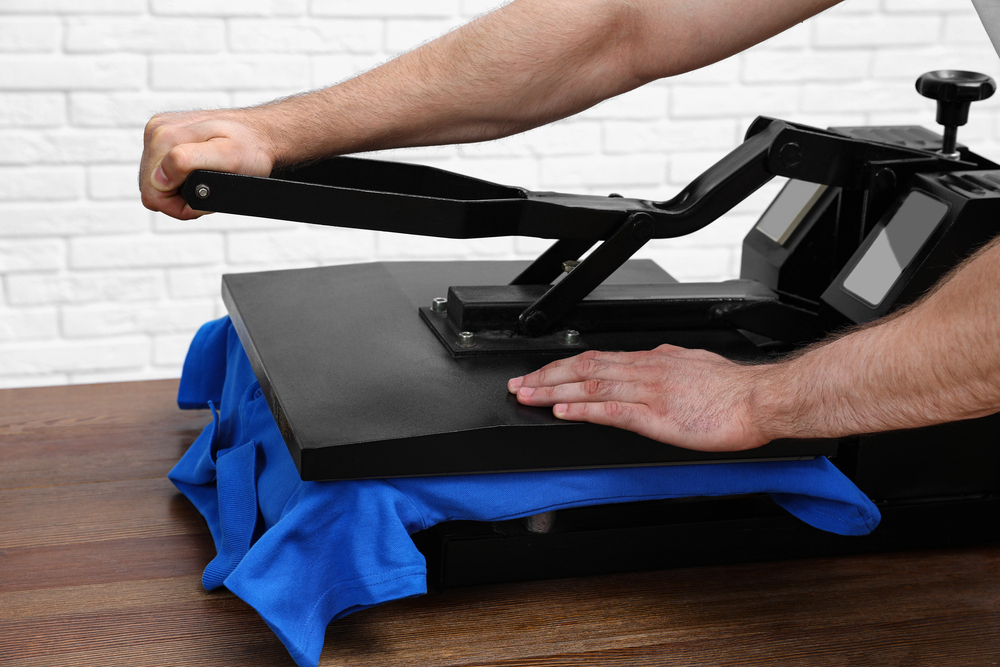
Which Printing Method is Right for You?
Choosing between DTF and sublimation printing will depend on your business’s specific needs and goals.
Choose Sublimation Printing If:
Sublimation printing is ideal if you are looking to create vibrant, permanent images on polyester-based materials. This method uses sublimation transfers, which are made using sublimation printers and inks, allowing the design to become a part of the fabric.
Choose Sublimation Printing If:
- You plan to work exclusively with light-colored polyester fabrics or polymer-coated items.
- Your focus is on creating vivid, durable designs for products like banners, coffee mugs, or socks.
- You prioritize cost-effective and quicker production for larger batches.
Choose DTF Printing If:
- You need a versatile technique that works on a wide range of fabrics, including cotton and blends.
- You’re printing complex, high-contrast designs, particularly on dark or textured materials.
- You want to run on-demand product lines with no material restrictions.
Consider Your Business Needs
When choosing between DTF and sublimation printing, it’s essential to consider your business needs. If you’re looking for high-quality, detailed designs on a wide range of materials, DTF printing might be the better option. However, if you’re looking for a cost-effective solution for larger orders on light-colored polyester fabrics, sublimation printing might be the way to go.
Consider your production volume, material requirements, and design complexity to make an informed decision. If you’re just starting out, sublimation printing might be a more accessible option due to its lower barrier to entry. However, if you’re looking for a more versatile printing solution, DTF printing might be worth the investment.

Why DTF Printing with Limitless Transfers Stands Out
For businesses interested in DTF printing, Limitless Transfers offers a premium service that simplifies your workflow. Here’s why they’re the best choice:
- No Minimum Order Requirements: Perfect for businesses of all sizes, from one-off orders to bulk production.
- Fast Turnaround: Same-day shipping on orders placed by noon (EST).
- Eco-Friendly Options: Though waste is inevitable, their high-precision CMYK+W printers reduce unnecessary ink usage.
- Unmatched Quality: Award-winning color accuracy and vibrant prints that withstand multiple washes.
- Versatility: Works on almost any material, from cotton and nylon to uncommon surfaces like leather or neoprene.
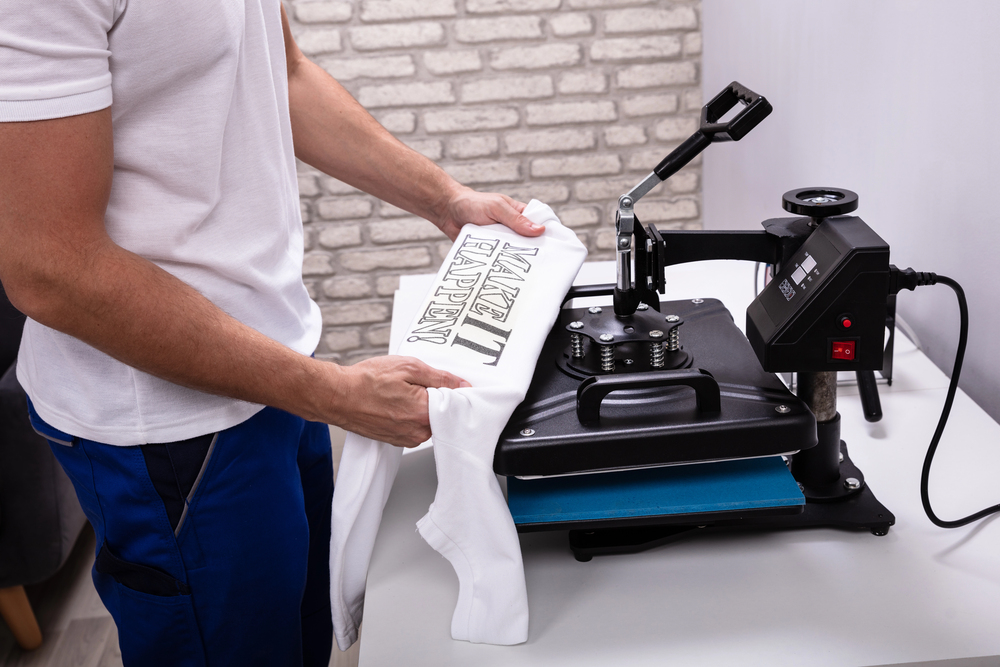
Final Thoughts
DTF printing and sublimation printing each offer unique benefits, making them suitable for different business models. For custom apparel businesses, the right choice depends on fabric types, budget, and customer needs. While sublimation printing works best for polyester and hard goods, DTF printing is the most versatile option overall, powering customization across various fabrics and designs.
If you’re ready to harness the limitless potential of DTF printing, get started with Limitless Transfers today. Their no-minimum, fast-shipping model ensures you’re always ready to take on new projects while delivering stunning results to your customers.

Learn More About DTF Printing
Expand your knowledge of DTF printing with these useful resources:
- What is DTF Printing? – A comprehensive overview of the DTF printing process, its benefits, and its applications.
- DTF vs. Sublimation Printing – A detailed comparison of DTF printing and sublimation printing to help you make an informed decision.
- DTF Printing Technology Explained – Insights into how DTF technology works and its growing popularity in the print industry.
- Caring for DTF Prints – Practical tips on maintaining and ensuring the longevity of your DTF-printed designs.
- Understanding DTF Printer Maintenance – A guide to properly maintaining your DTF printer to ensure consistent quality and long-term use.
- Creative DTF Design Ideas – Inspiration and tips for creating unique and eye-catching designs using DTF printing.
- DTF Printing for Beginners – An introductory resource perfect for those new to DTF printing, covering basic techniques and tools.
- Environmental Impact of DTF Printing – Insights on how to make DTF printing more eco-friendly and reduce waste.
These resources provide valuable guidance for both beginners and experienced professionals looking to integrate DTF printing into their workflows.

